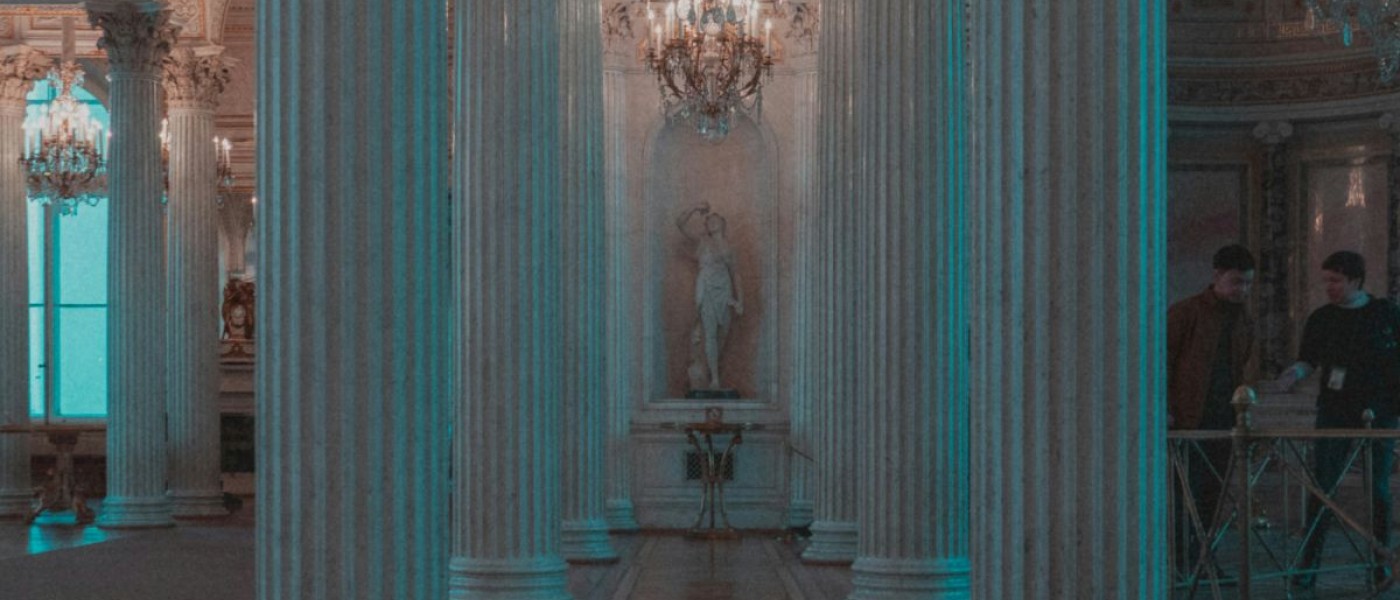
Timeless Allure: Why Vintage Jewellery Is Defining Modern Style
Timeless Allure: Why Vintage Jewellery Is Defining Modern Style
Credits: Francesco La Corte @Unsplash
Article by Amanda Triossi, Jewellery Historian and Expert, as seen in The Jewellery Trendbook 2027+ by Trendvision Jewellery + Forecasting.

Credits: Amanda Triossi, Portrait by Antonio Barrella, Studio Orizzonte
In an age marked by economic instability, climate urgency, and growing fatigue with uniformity, antique and vintage jewellery is emerging as a powerful emblem of style, sustainability, and self-expression. Once relegated to the realm of collectors or heirlooms, jewels of the past are now being reimagined as fashion’s boldest response to the present moment. The revival of vintage jewellery is unfolding alongside the rise of vintage fashion. Both movements tap into a desire for uniqueness, quality, and depth over the fleeting appeal of fast trends. In jewellery, this means choosing pieces that are not merely decorative. Wearers are increasingly drawn to items that reflect personal history, taste, and individuality. While contemporary fashion often references the past, antique and vintage jewellery is the past, recontextualized with modern flair. Sustainability is a key element in this shift toward jewels from earlier eras. As discussions around climate change intensify and the circular economy becomes more urgent, vintage and antique pieces offer a responsible alternative: no new mining, no fresh carbon footprint, and no added strain on the planet. Crafted from materials sourced decades or even centuries ago, these jewels exemplify the principles of reuse and long-term value. There is also a cultural instinct at play: in times of uncertainty, people often turn to the past for a sense of stability and reassurance.

Credits: Antique brooch in gold with micromosaic, ca 1800, courtesy of Faerber Collection
Among the wide-range of antique and vintage jewels available, it seems to me, and to major players in the secondary jewellery market, that women collectors are especially drawn to pieces from the 1940s. In particular, those that are bold, crafted entirely in gold (sometimes in contrasting hues such as yellow and pink), and largely unadorned by gemstones, such as tank bracelets, so-called because their designs loosely resemble tank tracks. The appeal of these particular bracelets may stem from several factors: firstly, the spirit of 1940s tank bracelets, born during a period of political instability and economic uncertainty, with designs drawn from the armament industry, resonates with the mood of today. Secondly, these bracelets are widely available on the secondary market in a range of forms: from solid, high-carat gold examples to hollow, lower-carat pieces that offer a more accessible entry point. This breadth allows them to appeal to a variety of collectors - from those seeking a high-value investment as a hedge against the rising cost of gold, to those drawn by the visual impact of a more affordable piece. Thirdly, their appeal lies in their wearability and versatility. Gold tank bracelets from the 1940s can be worn both casually and formally, and are easily mixed and matched with other styles, layering and self-expression being central to how jewellery is worn today. Moreover, although vintage, tank bracelets are sturdy and lack the fragility often associated with other antique or period jewels, making them ultimately easy to be worn.

Credits: Tank Bracelet in gold, ca 1940, courtesy of Faerber Collection
Charles Bianchini, Coiffe pour l’opéra comique Cendrillon de Jules Massenet, 1899, laiton, permes de verre, BnF © Charles Duprat / OnP, «Stage Jewellery at the “Opéra National De Paris”», Palais Garnier
Finally, the relative abundance of tank bracelets on the secondary market makes it possible to create not just a personal style, but a recognizable trend. If only a handful of such pieces had survived, they would remain a niche or collector’s curiosity. But because there are enough to choose from, they support both individual expression and the momentum needed to shape a movement in contemporary fashion. By contrast, diamond-set platinum pieces, such as the delicate, lacy garland-style jewels from the early 1900s, or the more geometric designs of the 1920s, once among the most sought-after collectables, have largely fallen out of favour. Their formal look and association with eveningwear make them less compatible with today’s more relaxed, layered approach to adornment that defines how women dress. Interestingly, however, some of these very same pieces, particularly geometric, linear, and bi-dimensional Art Deco brooches are being rediscovered by men. Disregarded by women for their formal appearance and incompatibility with deconstructed clothing, these brooches are gaining traction among a new audience in the wake of a broader revival of men’s jewellery.
One reason for their appeal is practical: they fit neatly onto the lapels of men’s tailored jackets. Furthermore, their clean geometry circles, triangles, or stylised floral motifs and two-dimensional structure lend them a refined, masculine clarity and restraint. Moreover, like tank bracelets, these brooches are relatively plentiful on the secondary market. They range from high-value, signed pieces by celebrated maisons such as Cartier, Van Cleef & Arpels, and Boucheron, to unsigned but equally decorative examples, making them accessible to a wide range of collectors. Given this renewed enthusiasm for brooches and the ongoing appreciation for craftsmanship and individuality, it would not surprise me if male collectors began to explore another historical category: Roman micromosaic brooches of the 1800s. These intricate pieces, composed of minuscule polychrome glass tesserae, embedded in hardstone panels, combine precision with artistry. Like the 1920s brooches, they offer unfussy elegance, lending them an understated, masculine appeal. Their wide-ranging subjects, from archaeological views of ancient Rome, Byzantine inspired motifs to depictions of mythological scenes, make them especially rich territory for self-expression and a taste for the unique. Today’s collectors are choosing jewels of the past that live easily in the present. As the world grows more uncertain, jewellery that carries history, emotion, and permanence is finding fresh relevance. In antique and vintage jewels, we find uniqueness and craftsmanship over repetition and mass production, symbolism over fleeting trends, and a hopeful reminder that beauty made to last will always find its moment again.
